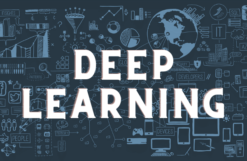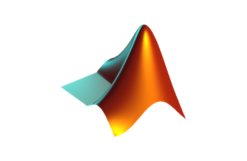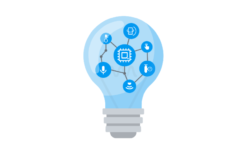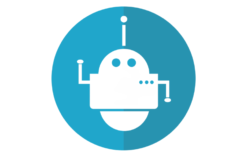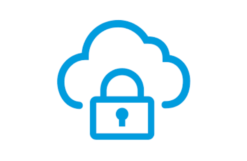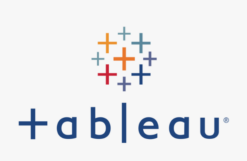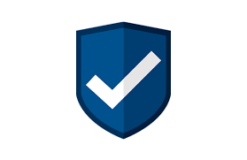Overview
Robotics and Artificial Intelligence (AI) are revolutionizing the field of nuclear technology, offering new possibilities for safety systems and environmental solutions. In this comprehensive and hands-on training course, we will explore the different technologies, frameworks, and techniques involved in programming robots specifically for nuclear applications. The target hardware for this course will be simulated in 3D through simulation software. The ROS (Robot Operating System) open-source framework, C++ and Python will be used for programming the robots.
Objectives
- Understand the key concepts used in robotic technologies.
- Understand and manage the interaction between software and hardware in a robotic system.
- Understand and implement the software components that underpin robotics.
- Build and operate a simulated mechanical robot that can see, sense, process, navigate, and interact with humans through voice.
- Understand the necessary elements of artificial intelligence (machine learning, deep learning, etc.) applicable to building a smart robot.
- Implement filters (Kalman and Particle) to enable the robot to locate moving objects in its environment.
- Implement search algorithms and motion planning.
- Implement PID controls to regulate a robot’s movement within an environment.
- Implement SLAM algorithms to enable a robot to map out an unknown environment.
- Extend a robot’s ability to perform complex tasks through Deep Learning.
- Test and troubleshoot a robot in realistic scenarios.
Audience
- Nuclear Engineers and Technicians: Professionals working in the nuclear industry who want to enhance their skills and knowledge in the application of AI and robotics within nuclear facilities.
- Robotics Engineers: Individuals with a background in robotics who are interested in specializing in the unique challenges and requirements of the nuclear field.
- AI Specialists and Data Scientists: Professionals with expertise in artificial intelligence and data analysis who wish to apply their skills in the context of nuclear technology and environmental systems.
- Researchers and Academics: Scientists, researchers, and academics involved in nuclear research and development who want to explore the potential of AI and robotics in their work.
- Students and Enthusiasts: Students pursuing degrees in engineering, computer science, or related fields, as well as individuals passionate about AI, robotics, and nuclear technology, looking to gain practical knowledge and hands-on experience in this emerging field.
Pre- requisites
- Basic understanding of programming concepts and familiarity with either C++ or Python programming languages. No prior experience in robotics or nuclear technology required.
- Experience with Linux command line
Duration: 5 days – 35 hrs
Course Content
Day 1: Introduction to Robotics and Artificial Intelligence (AI) in Nuclear Technology
- What Makes a Robot smart?
- Physical vs Virtual Robots
- Smart Robots, Smart Machines, Sentient Machines, and Robotic Process Automation (RPA)
- The Role of AI in Robotics
- The algorithms behind AI: Machine learning, computer vision, natural language processing (NLP), etc.
- Cognitive robotics
- The Role of Big Data in Robotics
- Decision-making based on data and patterns
- The Cloud and Robotics
- Case Study: Industrial Robots in Nuclear Facilities
- Hardware Components of a Robot: Motors, sensors, microcontrollers, cameras, etc.
- Common Elements of Robots: Machine vision, voice recognition, speech synthesis, proximity sensing, pressure sensing, etc.
- Development Frameworks for Programming a Robot: ROS (Robot Operating System), architecture, languages (C++ and Python), simulation software.
Day 2: Preparing the Development Environment and Programming Basics
- Software installation and setup
- Useful packages and utilities
- Case Study: Mechanical Robots in Nuclear Technology and Environmental Systems
- Programming the Robot: ROS nodes, messages, topics, publication/subscription paradigm
- Project: Bump & Go with a real robot
- Troubleshooting
- Simulation of Robots with Gazebo/ROS
- Frames in ROS and reference changes
- 2D information processing of cameras with OpenCV
- Information processing of a laser
- Project: Safe tracking of objects by color
- Troubleshooting
Day 3: Advanced Programming and Navigation
- Programming the Robot (Continued): Services in ROS
- 3D information processing of RGB-D sensors with PCL
- Maps and Navigation with ROS
- Project: Search for objects in the environment
- Troubleshooting
- Programming the Robot (Continued): ActionLib
- Speech Recognition and Speech Generation
- Controlling robotic arms with MoveIt!
- Controlling robotic neck for active vision
- Project: Search and collection of objects
- Troubleshooting
- Testing Your Robot: Unit testing
Day 4: Extending Robot Capabilities with Deep Learning
- Perception: vision, audio, and haptics
- Knowledge representation
- Voice recognition through NLP
- Computer vision
- Crash Course in Deep Learning: Artificial Neural Networks (ANNs), Feedforward Neural Networks, Activation Functions, Training Artificial Neural Networks
- Crash Course in Deep Learning (Continued): Deep Learning Models, Convolutional Neural Networks (CNNs), Recurrent Neural Networks (RNNs), Long short-term memory networks
- Deep Learning Platforms and Software Libraries
- Deep Learning in ROS
- Using Big Data in Your Robot: Concepts, data analysis approaches, tooling, pattern recognition
- Exercise: NLP and Computer Vision on large data sets
Day 5: Programming an Autonomous Deep Learning Robot, Data Analytics, and Future Outlook
- Using Big Data in Your Robot (Continued): Distributed processing, coexistence of Big Data and Robotics
- Programming an Autonomous Deep Learning Robot: Components, robot simulator setup, running neural networks with Cafe
- Troubleshooting
- Data Analytics: Collecting and organizing new data, tools and processes for data analysis
- Deploying a Robot: Transitioning from simulation to physical hardware, monitoring and servicing robots in the field
- Securing Your Robot: Preventing unauthorized tampering and data theft
- Building a Robot Collaboratively: Building in the cloud, joining the robotics community
- Future Outlook for Robots in the Science and Energy Field



